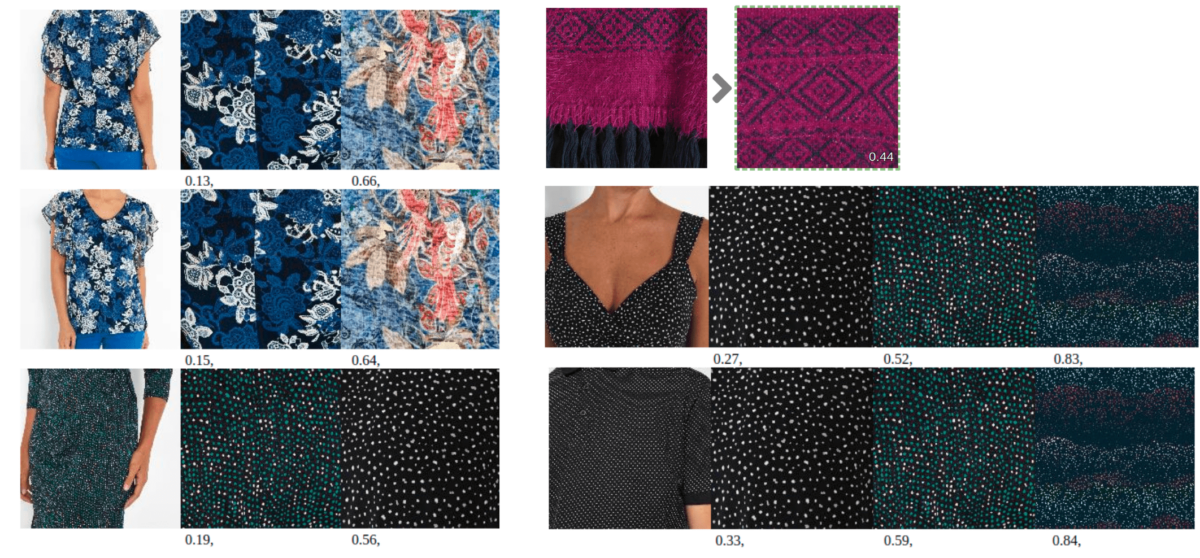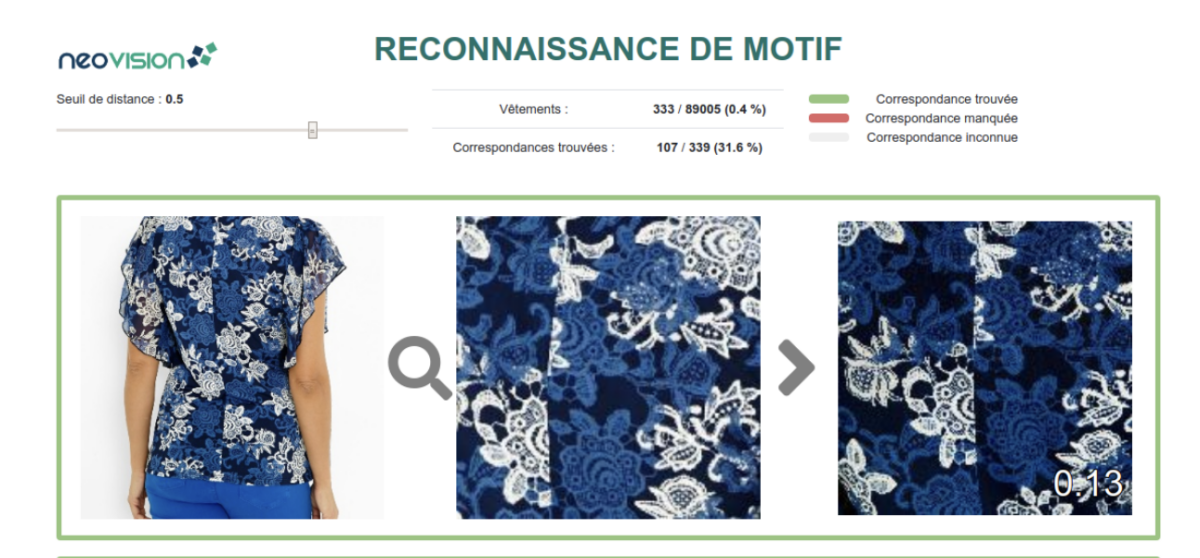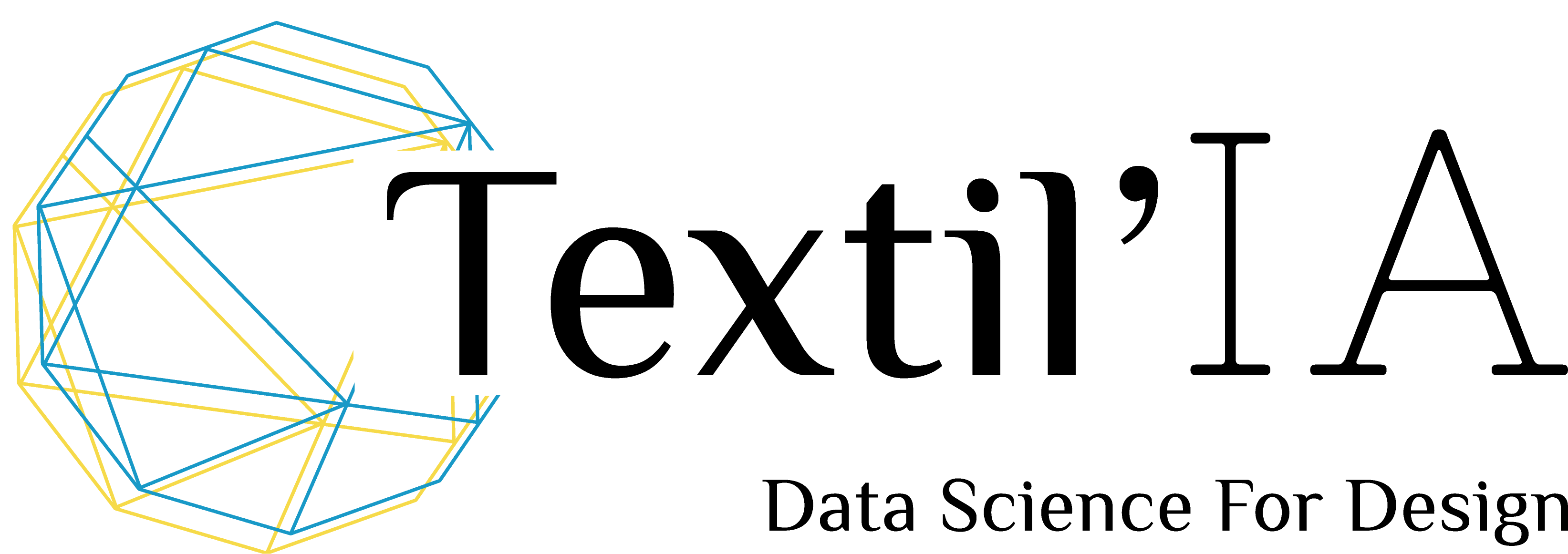TEXTILE SCANNING, SEARCH, AND IDENTIFICATION OF PATTERNS
ISSUE
Counterfeiting of patterns is a recurring problem in the textile industry. It involves the unauthorized reproduction of patterns or designs on textiles without the original creator’s permission. Beyond the economic losses it can cause (counterfeiters do not pay for the right to use the design and do not compensate the original work), it also impacts the brand image of the creators, as these patterns are often reproduced on low-quality textiles by counterfeiters using inappropriate manufacturing techniques. Identifying and detecting counterfeit patterns is a time-consuming task that requires constant monitoring of websites and social media platforms.
How to detect pattern counterfeits on the internet? How to easily access the entirety of patterns already created by the company?
SOLUTION PROVIDED
Neovision has designed a solution consisting of multiple AI components to address these issues. The first component enables automated counterfeit detection. The second component facilitates the digitization of textile archives to create a searchable database.
CUSTOMER BENEFIT
The development of this solution offers multiple benefits. Firstly, it saves a considerable amount of time by automating anti-counterfeiting monitoring. For textile companies, it is also an excellent way to capitalize on their existing patterns by enabling easy searching within their creation history.
REALIZATION
Counterfeit detection
To implement this functionality, we utilized multiple algorithms. The central algorithm aims to measure the distance between two patterns (by distance, we refer to a similarity score between two patterns). The lower the distance, the more similar the patterns are and potentially indicative of counterfeiting. We created a database of patterns, associating each pattern with one or multiple garments, to train a state-of-the-art neural network model. The objective is for the model to provide close descriptors for similar patterns and garments. The user can then adjust a similarity threshold to display more or fewer garments closely related to their pattern.


Pattern digitization and search
Textile companies often possess extensive archives stored in books. Digitizing these resources can be tedious and time-consuming. To assist them in this process, our client employs cutting-edge equipment to digitize the books, while we have developed algorithms capable of detecting and segmenting (outlining) the various patterns found on the pages. After validation by an operator, the patterns are saved in a digital catalog. Users can then search for patterns using text, visual similarity, or specific characteristics.
Date
18 July 2023
Category
Applications Web, Cloud, Computer Vision, Deep Learning, Industrie


